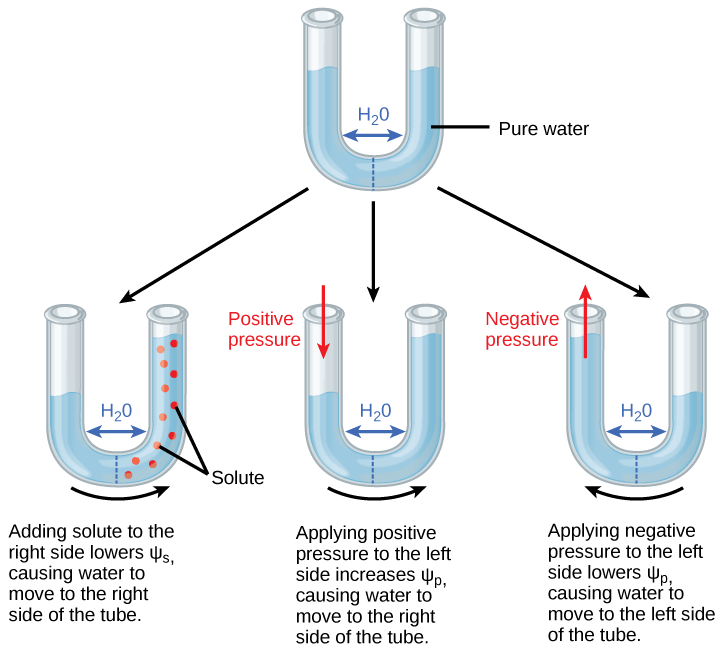2.Plant Physiology
2.4 Transport of water, minerals and assimilates
Transport of water ,mineral and assimilates
Dr V Malathi
Transport of nutrients, gasses, water, and waste is essential for all living organisms . This is made possible through the process of diffusion in some small plants and animals while carried out by organized transport systems in larger plants and animals.
The structure of plant roots, stems, and leaves facilitates the transport of water, nutrients, and products of photosynthesis throughout the plant.
The xylem is the tissue primarily responsible for movement of water and the phloem for the transport of nutrients and photosynthetic products.
Plants are able to transport water from their roots up to the tips of their tallest shoot through
- water potential,
- evapotranspiration, and
- stomatal regulation
As we had discussed about transpiration and stomatal regulation in previous chapters we will focus on water potential.
Water Transport from Roots to Shoots
Water potential is a measure of the potential energy in water. It is based on potential water movement between two systems. It is the difference in potential energy at atmospheric pressure and ambient temperature between any given water sample and pure water .
Water potential is denoted by the Greek letter Ψ (psi)
and is unit od water potential is megapascals (MPa).
The potential of pure water (Ψpure H2O) is ignored and considered as zero .
Water potential is calculated using the equation
Ψ system= Ψ total= Ψs + Ψp +Ψg +Ψm
Water potential can be positive or negative,
Ψ system= Ψs + Ψp, where
Ψs = solute potential, and Ψp = pressure potential.
Addition of solutes decreases the water potential and vice- versa.
While addition of pressure increases the water potential and vice-versa.
Water always moves from a region of high to low water potential until equilibrium is reached.
The water potential at a plant’s roots is predicted to be higher than the water potential in each leaf and the water potential of the lef is predicted to be higher than the water potential in the atmosphere.
This fact enables water to continuously move through the plant from the soil to the air without equilibrating
Mathematically: Ψsoil must be > Ψroot > Ψstem > Ψleaf > Ψatmosphere.
The solute potential (Ψs)
This is also called osmotic potential,
The solute potential of pure water is 0.
Further it is to be recollected that as solute concentration increases the water potential decreases.
The high concentration of solutes in the cytoplasm of the plant cell makes the solute potential of the plant cell to be negative.
Water will move from the soil into a plant’s root cells via osmosis until the water potential in the plant root cells is lower than the water potential of the water in the soil.
Further plants can metabolically change their solute potential by adding or removing solute molecules to increase water uptake from the soil during drought conditions.
Pressure potential (Ψp)
This is also called turgor potential,
It may be positive or negative.
Positive pressure or compression increases Ψp, while negative pressure or vacuum decreases Ψp.
The turgor pressure produced because of the rigid cell wall creates positive pressure inside cells and can be as high as 1.5 MPa in a well-watered plant.
Plant cells can modify pressure potential by the process of osmosis and by changing the Ψs
If cytoplasmic solute concentration is increased then Ψs will decline and water will move into the cell by osmosis.
This causes Ψp to increase.
The opening and closing of stomata also regulates Ψp
When stomata opens water evaporates from the leaf, reducing Ψp and Ψtotal of the leaf
This increases the water potential difference between the water in the leaf and the petiole and allows the water to flow from the petiole into the leaf.

“Pholem” by Open Stax is licensed under CC BY 4.0
“Pholem” by Open Stax is licensed under CC BY 4.0
Watch the video from FuseSchool – Global Education

